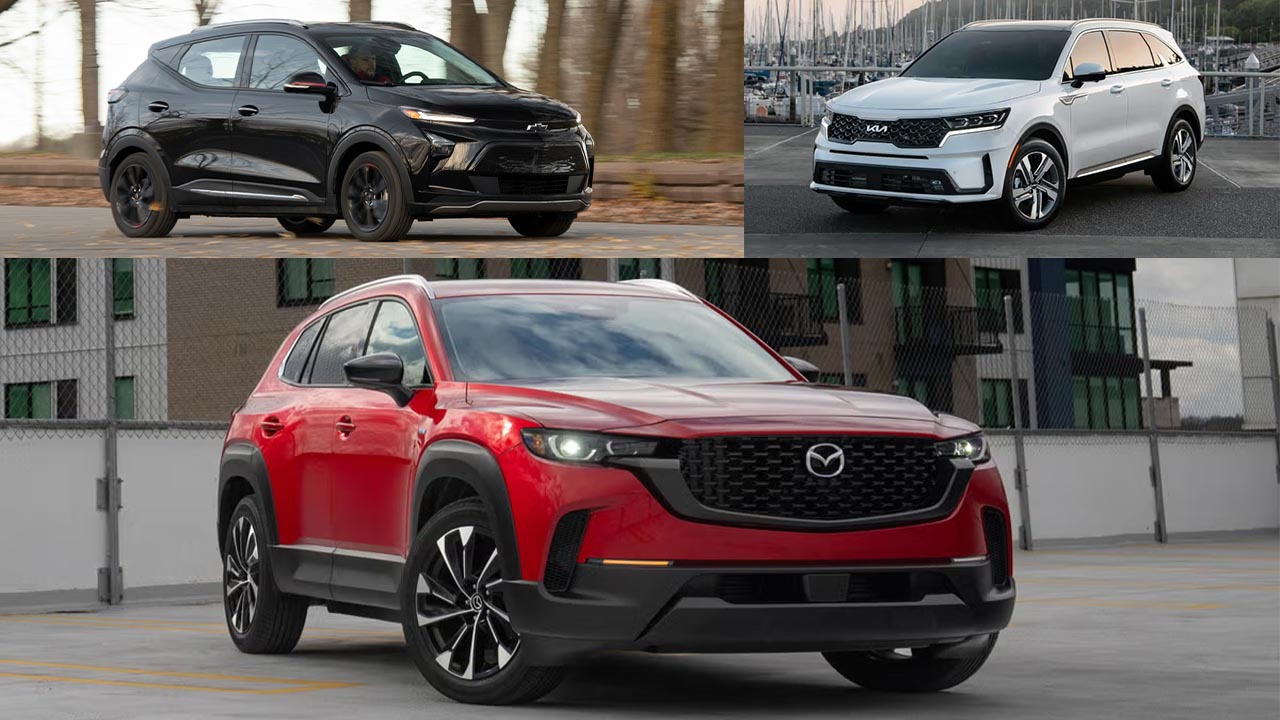We’ve ranked the best compact SUVs by analyzing nearly 200 data points across categories such as acceleration, handling, comfort, cargo capacity, fuel economy, overall value, and how enjoyable each vehicle is to drive.
We don’t take these rankings lightly — our goal is to equip you with a clear, in-depth understanding of the vehicles that interest you.
When it comes to choosing a compact SUV, flashy features and sleek designs are nice—but long-term reliability is what truly matters.
Whether you’re commuting daily, hauling your family around, or heading out for weekend adventures, you need a vehicle that can go the distance without becoming a money pit. With rising maintenance costs and increasingly complex vehicle tech, durability is more important than ever.
Compact SUVs That Last
In this list, we’re cutting through the hype to highlight five compact SUVs that not only perform well but also stand the test of time. These are the models drivers keep for years—and for good reason.
2025 Honda CR-V
Topping the list is the 2025 Honda CR-V, which earns a perfect 10/10 C/D Rating. Starting at $31,495 with an EPA-estimated 28–30 mpg combined, the CR-V continues to set the benchmark for the compact crossover segment.
“The Honda CR-V maintains its leadership in the compact crossover segment, continuing into 2025 as an all-around gem.” It’s currently ranked #1 in Best Crossover SUVs, Best SUVs Under $40,000, and holds the #2 spot in both Safest SUVs and Best AWD SUVs.
Beneath the CR-V’s upright grille lies a standard 190-hp turbocharged 1.5-liter four-cylinder engine. This powertrain is paired with a continuously variable transmission (CVT) and offers the choice between front- or all-wheel drive.
This configuration is standard on the LX, EX, and EX-L trims. Every CR-V model comes equipped with hill-descent control, a feature that helps regulate speed on steep or slippery slopes when driving at lower speeds. Most CR-V variants are outfitted with 18-inch wheels.
While the vehicle doesn’t deliver the sporty handling found in the Mazda CX-50 or the Volkswagen Tiguan, the latest CR-V delivers a comfortable ride and sufficient spirit to avoid feeling dull.
At our test track, the nonhybrid EX-L version took 8.1 seconds to reach 60 mph. This makes it a bit sluggish compared to others in its class and slightly slower than the hybrid version. The CVT also contributes to engine drone during hard acceleration.
When equipped with optional towing accessories, the Honda CR-V is capable of towing up to 1500 pounds.
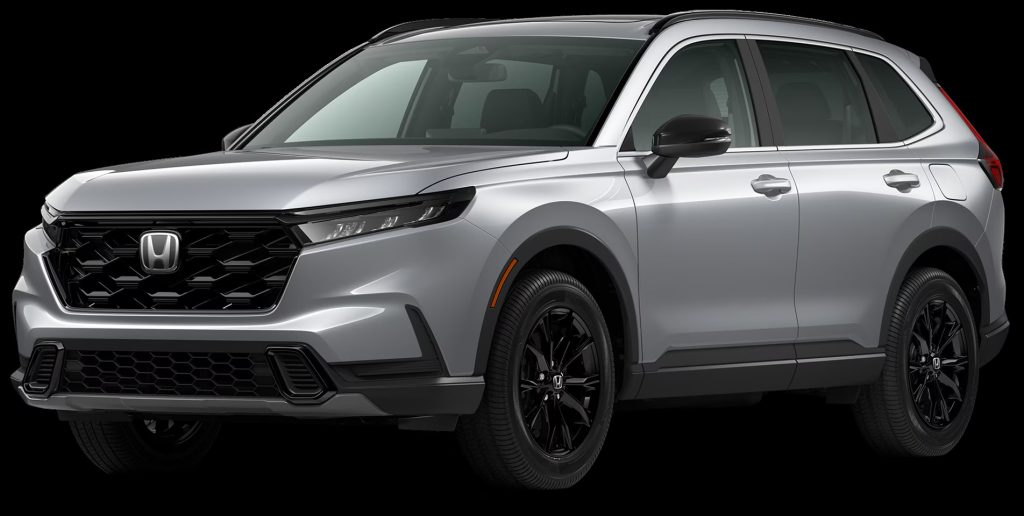
The nonhybrid CR-V delivers fuel economy figures that remain competitive within the segment. The front-wheel-drive version with the turbocharged 1.5-liter four-cylinder engine achieves EPA estimates of 28 mpg in the city and 34 mpg on the highway.
Opting for all-wheel drive slightly reduces these numbers. During our real-world 75-mph highway fuel economy test, the all-wheel-drive EX-L returned 31 mpg. For more details on the CR-V’s fuel efficiency, visit the EPA’s website.
Inside, the CR-V showcases a refined interior design, featuring a honeycomb-textured trim that runs across much of the dashboard and subtly conceals the air vents.
The steering wheel houses a partially digital gauge cluster, which includes an analog speedometer alongside a 7.0-inch digital display that can toggle through various informational screens.
According to Honda, the front seats are engineered to reduce fatigue on long drives, and the redesigned driving position is said to offer improved ergonomics.
Between the front seats is a large center console bin, and the rear seats recline, offering an extra 0.6 inch of legroom compared to the previous model. Behind the second row, there’s 39 cubic feet of cargo space when the adjustable load floor is in its lowest setting.
The CR-V’s infotainment system comes with a 7.0-inch touchscreen on the LX and EX trims. This setup includes physical knobs for volume and tuning, along with Apple CarPlay and Android Auto integration.
On the EX-L, the system is upgraded to a 9.0-inch touchscreen, which supports wireless Apple CarPlay and Android Auto.
While the larger screen omits a tuning knob, it retains a volume knob and includes built-in navigation, two USB-C ports for passengers in the rear, and wireless smartphone charging.
Also Read: 11 Foreign Car Brands Building Their Best Vehicles in America
2025 Mazda CX-50
In second place is the 2025 Mazda CX-50, scoring a strong 9.5/10. With pricing from $31,720 and fuel efficiency between 25–28 mpg combined, this model proves that Mazda hasn’t lost its signature driving thrill.
“The Mazda lineup has more SUVs than ever, but the 2025 CX-50 is proof that there’s still plenty of zoom-zoom left in the tank.” It’s also ranked #2 among Mazda SUVs and Crossovers.
The Mazda CX-5 has been in production since 2017, which is considered quite a long time in the automotive world.
Still, even with the arrival of newer compact-crossover competitors, the CX-5 continues to stand out as one of the most appealing options—both in terms of design and driving experience. In 2023, Mazda introduced the slightly bigger and more expensive CX-50, yet instead of reducing the CX-5’s lineup, Mazda retained its full offering.
The CX-5 remains robust with eight trim levels, a pair of four-cylinder engines (including a spirited turbocharged variant), standard all-wheel drive, a well-crafted interior, and a dynamic personality behind the wheel.
While the Honda CR-V and Toyota RAV4 might edge it out in terms of pure practicality, Mazda’s compact crossover still offers more than enough space for most buyers.
Its engaging driving dynamics make it a go-to choice for people who enjoy being behind the wheel. It’s no surprise the CX-5 holds a spot on our Editors’ Choice list for 2025.
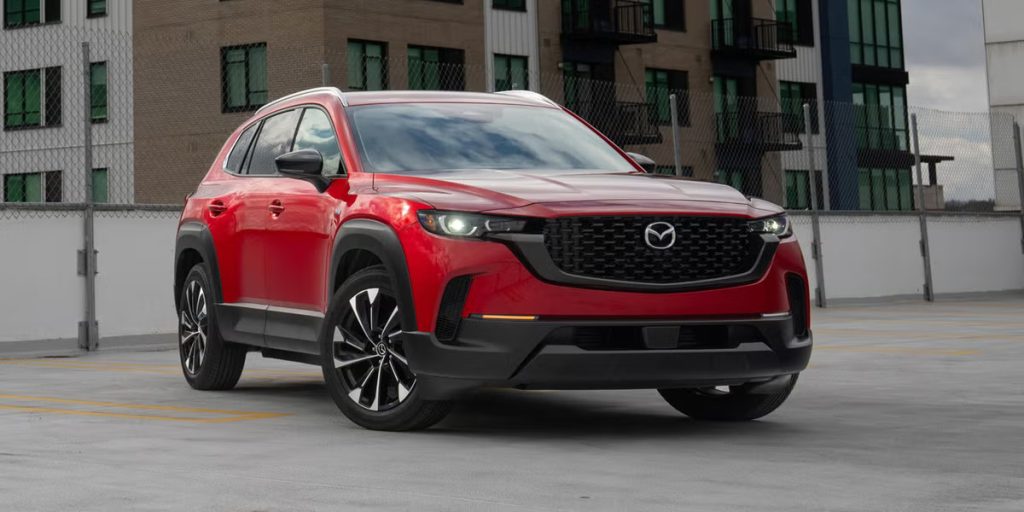
In the latest rankings, the Mazda CX-5 sits at #3 among the Best Compact SUVs. It follows the Honda CR-V at #1, which starts at $31,495, and the Mazda CX-50 at #2, which starts at $31,720.
Just below the CX-5, which starts at $30,190, are the Ford Bronco Sport at $31,590, the Volkswagen Tiguan at $30,305, and the Hyundai Tucson at $30,155.
For the 2025 model year, several updates have been introduced. The S trim returns to serve as the more affordable base model, while the nonturbo Premium trim has been dropped.
The Carbon Edition now includes wireless Apple CarPlay, Android Auto, and wireless phone charging as standard features. The Premium Plus trim gains a surround-view camera system and parking sensors. Additionally, all CX-5 models now feature USB-C inputs for the front seats.
Pricing for the 2025 Mazda CX-5 ranges from $30,190 to $42,220, depending on trim and options.
The S trim starts at $30,190, followed by the Select at $31,520, Preferred at $32,870, Carbon Edition at $34,220, Premium Plus at $36,820, Carbon Turbo at $38,420, Turbo Premium at $39,420, and Turbo Signature topping out at $42,220. Of all the available versions, the Turbo Premium trim is our top recommendation.
It features a 256-hp turbocharged engine that brings power in line with the CX-5’s athletic handling. It also boasts gloss-black exterior accents specific to the trim and a more vibrant interior, highlighted by red stitching and details that give it a more performance-oriented feel.
2025 Mazda CX-5
Coming in third is the 2025 Mazda CX-5, which also impresses with a 9/10 rating. It starts at $30,190 and delivers 24–28 mpg combined. Though it’s not the most practical choice in the segment, “the Mazda CX-5 makes up for it with an attractive exterior, a luxurious interior, and sporty driving dynamics.”
The Mazda CX-5’s standard 187-hp four-cylinder engine delivers excellent throttle response, especially when accelerating from a stop or maneuvering through city streets, which makes the SUV feel quicker than it actually is.
However, its performance does taper off at higher speeds, like when merging onto highways or executing passing maneuvers—it starts to feel underpowered in those scenarios.
In contrast, the 256-hp turbocharged engine variant we tested significantly improved acceleration times, offering a noticeable bump in performance. Both engine options are mated to a responsive six-speed automatic transmission and come standard with all-wheel drive.
You don’t need to push the CX-5 hard to enjoy its well-rounded driving dynamics. The crossover’s finely tuned steering and balanced handling make it a joy for spirited weekend drives, yet it also handles rough roads with a calmness usually reserved for more expensive vehicles.
This blend of comfort and control is unmatched in the segment. The CX-5 absorbs bumps with ease, keeps road noise at bay, and offers a suspension that’s firm without being jarring and soft without being floaty.
It also comes to life on winding roads, with electrically assisted steering that feels engaging and responsive. When we tested the Signature model, we found the brake pedal offered strong feedback, responding instantly and smoothly without feeling overly sensitive.
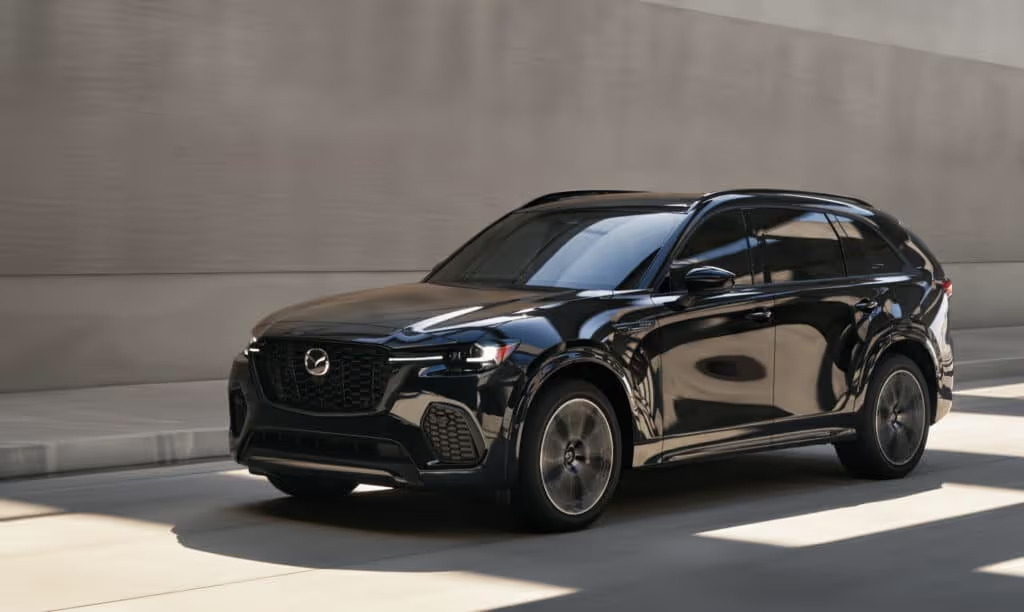
In our 0–60-mph testing, the CX-5 with the base engine took 8.1 seconds to reach highway speed.
That might not sound quick, but it’s on par with the Honda CR-V and slightly better than the Toyota RAV4 by 0.2 seconds. If speed matters to you, the turbocharged engine is the better pick, clocking a brisk 6.2 seconds in the same test.
As for towing capability, the Mazda CX-5 can handle up to 2000 pounds. While that isn’t a massive figure, it’s still a step above some rivals like the Honda CR-V and Volkswagen Tiguan.
The Mazda CX-50 has a higher towing capacity—up to 3500 pounds—but that’s only achievable when equipped with the turbocharged engine. Without it, its towing capacity mirrors that of the CX-5.
2025 Ford Bronco Sport
The 2025 Ford Bronco Sport also earns a 9/10 rating and starts at $31,590. With 23–26 mpg combined, it delivers a rugged yet accessible driving experience.
“The 2025 Bronco Sport can’t go places the bigger Bronco can, but the baby version still has the capabilities to give buyers a taste of the off-roader lifestyle.”
For the 2025 model year, Ford introduces the Sasquatch package to the Bronco Sport lineup. This new package is available on both the Outer Banks and Badlands trims. Notably, the Outer Banks now features a twin-clutch rear differential.
The Sasquatch setup enhances the Bronco Sport’s off-road capability with the addition of new steel bumpers, including a bull bar up front and two recovery hooks at the rear.
It also comes with steel skid plates, a modest increase in ground clearance, and a more aggressive set of 29-inch all-terrain tires. For the Badlands trim specifically, Bilstein rear dampers are also part of the Sasquatch package.
Across the lineup, every 2025 Bronco Sport replaces its old 8.0-inch infotainment screen with a new, larger 13.2-inch touchscreen, now running on Ford’s updated Sync 4 interface instead of the older Sync 3. A 12.3-inch digital gauge cluster also becomes standard.
Minor cosmetic updates to the front and rear bumpers distinguish the 2025 model visually, and Ford has increased the standard suite of driver assistance features to include adaptive cruise control.
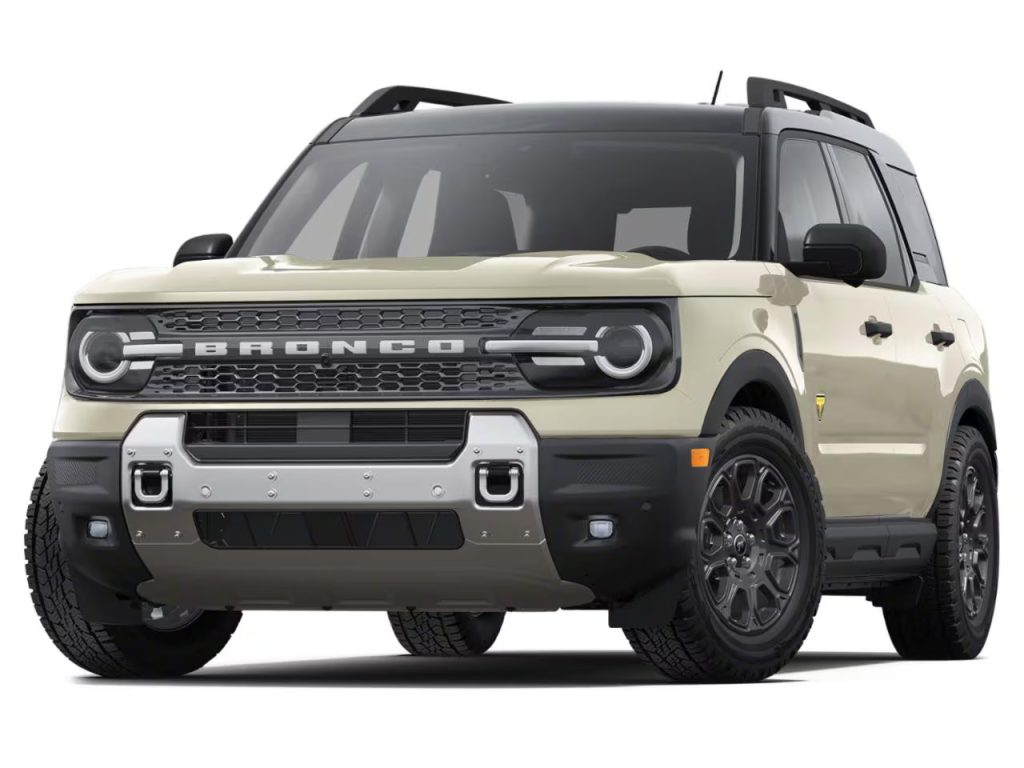
The 2025 Ford Bronco Sport starts at $31,590 and goes up to $41,710, depending on trim and options. The Big Bend trim opens the lineup at $31,590, followed by the Free Wheeling at $34,730, and the Heritage Edition at $34,990.
The Outer Banks trim starts at $36,890. The Badlands, priced at $41,710, is recommended for those seeking the most off-road capability.
Though it sits at the top end of the pricing spectrum, the Badlands model offers more rugged features, including a 250-hp turbocharged four-cylinder engine—the stronger of the two available—and a beefed-up all-wheel-drive system, a raised suspension, and enhanced dampers built for trail adventures.
Under the hood, the Bronco Sport shares its architecture with the compact Ford Escape and comes standard with all-wheel drive on every model. The base engine is a 180-hp turbocharged 1.5-liter three-cylinder, while the available upgrade is a more powerful 250-hp turbocharged 2.0-liter four-cylinder.
Both engines are mated to an eight-speed automatic transmission. The 2.0-liter engine enhances performance with steering-wheel-mounted paddle shifters and improved cooling components.
The Badlands trim comes with specialized features, including a twin-clutch rear-drive unit with a differential lock—also found on Sasquatch-equipped Outer Banks models.
Both the Badlands and Sasquatch versions feature all-terrain tires on 17-inch wheels, a 1.0-inch suspension lift for greater ground clearance, and reinforced dampers. When tested both on and off the road, the 2025 Bronco Sport Badlands Sasquatch demonstrated solid trail capability.
Although its aggressive tires generate more highway noise compared to standard models, its handling remains sharp. The 2.0-liter engine delivers brisk acceleration, while the base 1.5-liter engine feels underpowered, especially at higher speeds.
Also Read: 10 Volkswagens Known for Long-Lasting Engines
2024 Volkswagen Tiguan
Rounding out the top five is the 2024 Volkswagen Tiguan, also rated 9/10. Priced from $30,305 and achieving 24–26 mpg combined, it stands out with European flair and unique versatility.
“The Tiguan blends spirited handling, subtle style, and an available third-row seat to bring European charm to the competitive compact-SUV class.” It also ranks #1 in Best Compact 3-Row SUVs.
As with the previous model year, the mid-range SE trim remains our recommended pick, thanks to its inclusion of 18-inch wheels, a power-operated rear liftgate, remote start, and dual-zone climate control. One notable update for 2024 is that the Base S trim now comes standard with the IQ.
Drive semi-autonomous lane-keeping assist system, which was previously exclusive to the SE and higher trims. However, the S trim still features a smaller 6.5-inch infotainment display and does not offer the panoramic sunroof, which remains a $1200 option on the SE.
Under the hood of the 2024 Volkswagen Tiguan lies the brand’s familiar turbocharged 2.0-liter four-cylinder engine, producing 184 horsepower and 221 pound-feet of torque.
Power is delivered through an eight-speed automatic transmission to the front wheels by default, with Volkswagen’s 4Motion all-wheel-drive system available as an option.
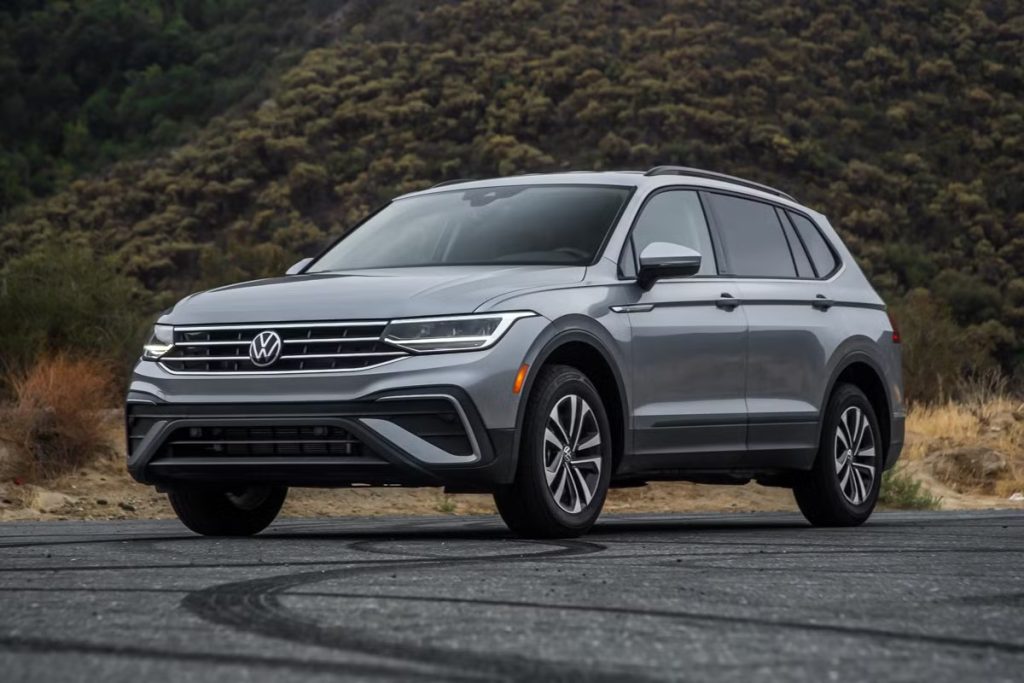
Regardless of drivetrain, the Tiguan offers a responsive and composed driving experience, bolstered by its early peak torque at just 1900 rpm and the transmission’s smooth gear changes.
Some members of our team even noted a hint of the sporty driving feel reminiscent of the GTI hot hatch, although it’s more subtle.
That said, the brake pedal stands out as the weak point in the Tiguan’s otherwise confident dynamic package, with a soft and slightly vague feel that falls short of the crisp brake response found in other Volkswagen models.
Despite a 0–60 mph time of 8.2 seconds—not exactly a headline-grabber—the Tiguan delivers a cohesive and composed on-road demeanor that makes it feel more capable than the raw numbers suggest.
Its accessible low-end torque improves drivability around town, making quick starts and light-footed maneuvers easy. It’s only during more demanding situations, such as highway merges, that the Tiguan’s modest power output may leave drivers wishing for a bit more punch.
Unreliable Compact SUV
While some of the most popular SUVs on the market may seem appealing, their popularity doesn’t always translate to reliability.
As we move further into 2023 and testing for all new models continues, the list of least reliable SUVs has shifted significantly since 2022. However, models like the Volkswagen Taos and Kia Sorento remain among the least reliable options available.
The vehicles on this list have either experienced reliability issues in past years or are already facing complaints and recalls from the NHTSA.
If you’re in the market for a new SUV and want to avoid potential reliability concerns, it’s worth reconsidering the models featured here before making your decision.
5. 2023 Nissan Pathfinder
The 2023 Nissan Pathfinder continues the model’s fifth generation, which began with the 2022 redesign following its absence from the market in 2021.
The update brought notable improvements to handling due to a wider stance, though this enhancement comes at the cost of a stiffer and less comfortable ride quality.
Under the hood, the Pathfinder is equipped with a more robust engine than in previous versions, now paired with a smooth-shifting nine-speed automatic transmission that helps deliver a refined driving experience.
Despite the initial optimism surrounding the new model, the Pathfinder’s reliability has been underwhelming.
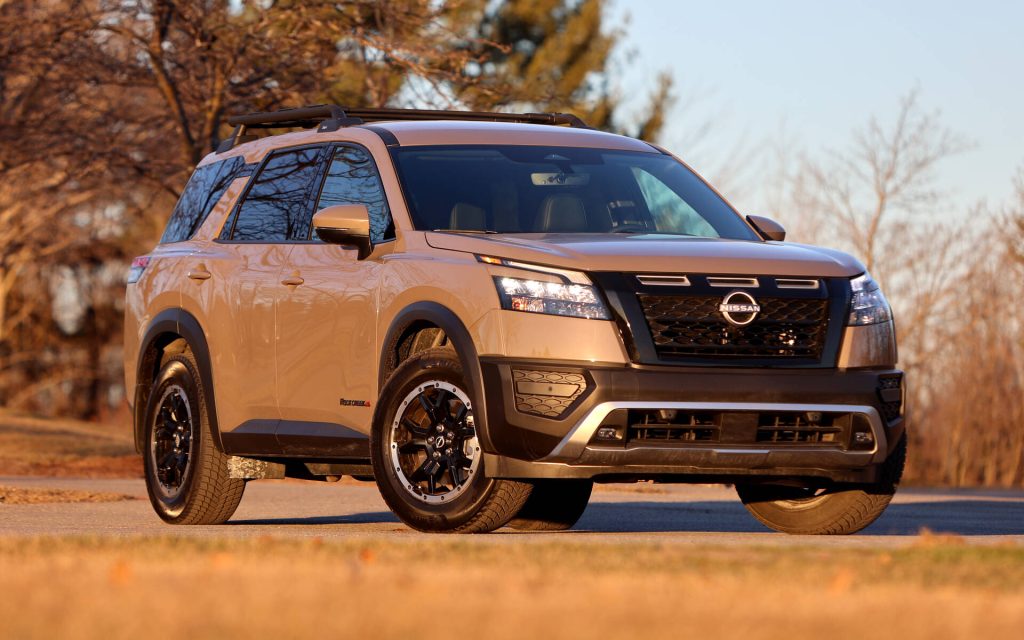
Consumer Reports noted a range of issues with the 2022 version, including problems with in-car electronics, power equipment, body hardware, and significant transmission malfunctions. While the engine itself proved to be dependable, these other recurring concerns weighed heavily on the vehicle’s overall reliability.
As a result, the 2022 Pathfinder received a low reliability score of 1 out of 5, and the 2023 model is expected to perform similarly.
The model has had one recall so far, related to broken welds on the seats. For buyers considering used models, the 2017 Nissan Pathfinder is the worst year to target, with reported issues in areas such as the electric fan, antilock brake system, transmission sensor, engine, transmission, drive system, and climate controls.
4. 2023 Ford Explorer
The 2023 Ford Explorer represents the second model year of its sixth generation, introduced in 2022. Visually, the updated Explorer appears modern and appealing, but underneath the surface, it falls short in key areas.
Ford’s latest version of the Explorer suffers from several performance drawbacks, including a transmission that clunks during operation, a noticeably loud engine, and a stiff suspension that results in a harsh and less-than-pleasant ride.
In terms of reliability, the Explorer has struggled with consistency. Consumer Reports highlights ongoing issues involving in-car electronics, power equipment, body hardware, and body integrity, in addition to regularly reported minor transmission troubles.
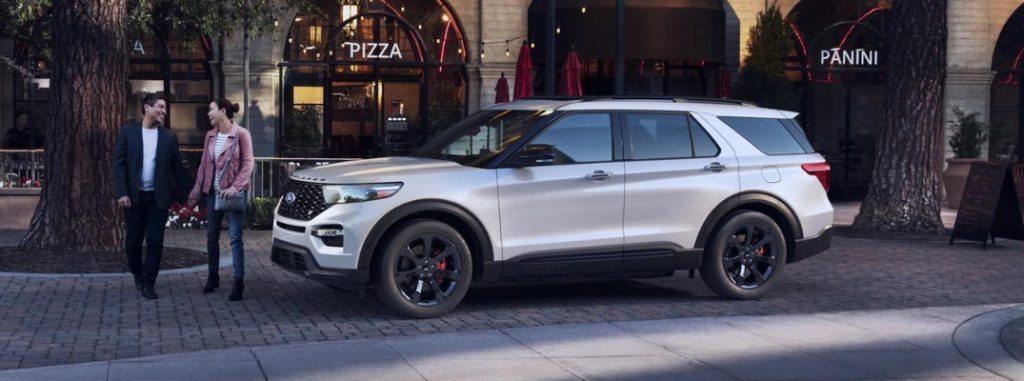
Reliability scores for the Explorer were particularly poor in 2020 and 2021, each earning just 1 out of 5. While the 2022 model showed a slight improvement to 2 out of 5, the 2023 edition is expected to regress back to a 1 out of 5 rating.
The average annual maintenance cost is estimated at $775 by RepairPal, with CarEdge projecting a total of $9,017 in maintenance over the first ten years of ownership. The 2023 Explorer has been subject to three recalls, including issues with the backup camera and power train.
Among used models, the 2016 Ford Explorer is considered the worst year to buy, due to widespread complaints regarding air and water leaks, paint and trim defects, steering and suspension problems, drive system faults, climate control malfunctions, transmission troubles, and body hardware failures.
2023 Kia Sorento
The 2023 Kia Sorento, with a predicted reliability rating of 1/5, continues the trend of reliability issues that have plagued the model since the early 2010s. Kia, known for offering some of the most affordable vehicles in its segment, is also the oldest carmaker in Korea.
However, their focus on keeping costs low sometimes leads to compromises in quality. The 2023 Sorento, which starts at $30,000, is a noisy SUV with a rough ride and slow acceleration.
Reliability issues have persisted from previous years, and the 2023 model has earned an estimated reliability rating of just 5 out of 100. The main problems with the 2023 Sorento include transmission and drivetrain issues, along with both major and minor engine problems in the hybrid version.
The average yearly maintenance cost for the Sorento is $474, with an estimated total maintenance cost of $7,953 over the first 10 years.
The vehicle has had one recall related to a trailer hitch harness fire hazard, and the worst used year to buy is the 2014 Kia Sorento, which has issues with the ABS, brake calipers, air-conditioning condenser, paint, trim, engine, engine computer, and body hardware.
The mid-size crossover and SUV market is packed with options, but the three-row Kia Sorento stands out as one that’s definitely worth a look.
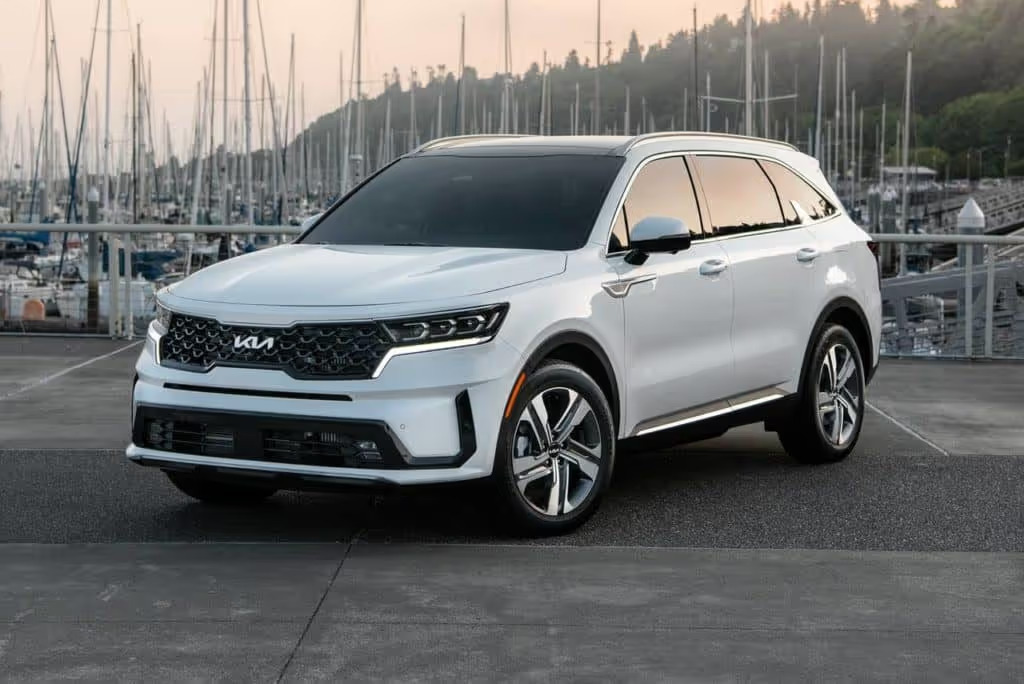
Designed to accommodate up to seven passengers, the Sorento delivers the practicality of the larger, V-6-powered Telluride while providing superior fuel efficiency and a range of available powertrains.
In its standard configuration, this front-wheel-drive SUV comes equipped with a 191-hp inline-four engine paired with an eight-speed automatic transmission.
Still, we recommend buyers consider upgrading to the more capable 281-hp turbocharged four-cylinder and opting for all-wheel drive to enhance performance.
Additionally, Kia offers the Sorento with a 227-hp hybrid powertrain that achieves an EPA-estimated 37 mpg combined, and a 261-hp plug-in hybrid (PHEV) variant that boasts an estimated 32 miles of all-electric driving range. However, those hybrid versions are evaluated in separate reviews.
2023 Chevrolet Bolt EUV
The 2023 Chevrolet Bolt EUV, also predicted to have a reliability rating of 1/5, offers a more spacious and comfortable ride compared to the base-level Bolt.
Introduced in 2022, the Bolt EUV is designed to be more SUV-like, with additional room for passengers and luggage, as well as the introduction of the Super Cruise active driving assistance system.
Despite these upgrades, Consumer Reports still gives the Bolt EUV a predicted reliability rating of 1 out of 5, possibly due to ongoing issues with the electric motor that have affected past models.
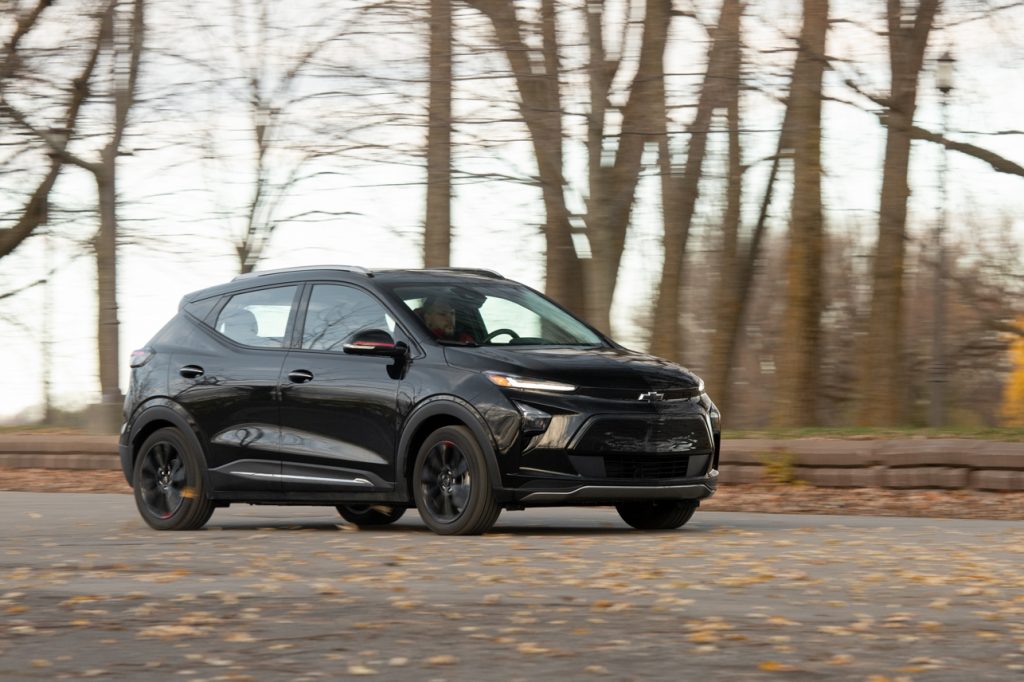
The average yearly maintenance cost for the Bolt EUV is $649, and maintenance costs over the first 10 years are estimated at $6,490.
The vehicle has had one recall due to a seatbelt pre-tensioner that could cause a fire. For those looking to buy used, the 2022 Chevrolet Bolt EUV is the worst model year to purchase due to issues with in-car electronics, the electric motor, and air/water leaks.
2023 Volkswagen Taos
Lastly, the 2023 Volkswagen Taos, also receiving a 1/5 predicted reliability rating, takes the top spot for the most unreliable SUV in the U.S., following in the footsteps of the 2022 model.
Despite this, Volkswagen has made no indication that they plan to address the ongoing issues, and it is expected that the 2023 version will continue to perform poorly. A common complaint from owners and testers is a significant delay when accelerating from a complete stop.
The Taos’ reliability issues include both major and minor engine problems, electrical component malfunctions (including safety features), transmission failures, fuel system issues, and drivetrain problems that could leave a driver stranded.

This collection of issues has led Consumer Reports to rate the Taos’ reliability at just 1 out of 100. The average yearly maintenance cost for the Taos is $676, with an estimated total of $8,166 over the first 10 years.
Interestingly, the 2023 Taos has had no recalls, but the 2022 model is considered the worst year to buy used due to problems with the engine, in-car electronics, fuel system, emissions, transmission, noises, and air and water leaks.

